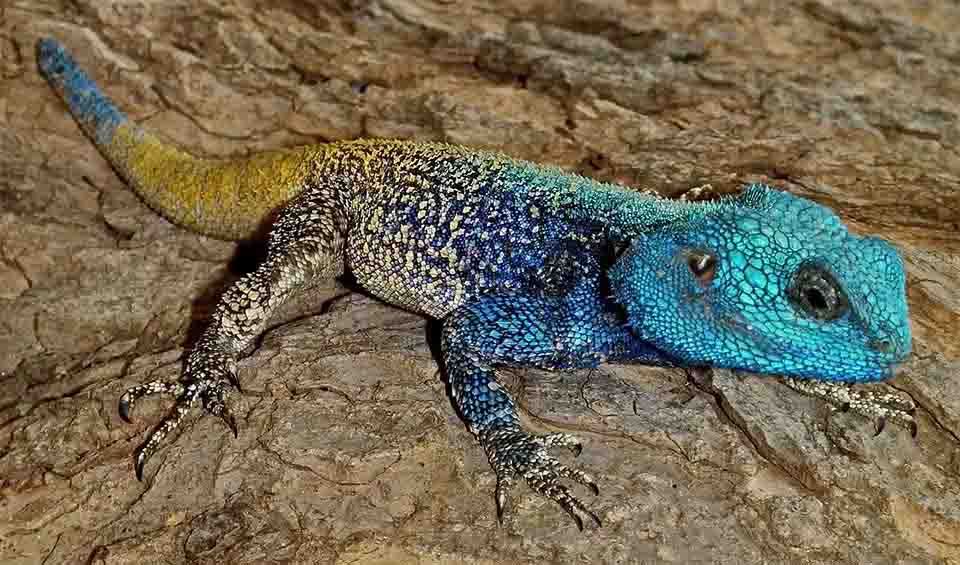A fascinating lizard commonly found in southern Africa, including countries like South Africa, Zimbabwe, and Mozambique. This lizard is well-known for its striking appearance and its ability to thrive in various habitats, including woodlands, savannas, and urban areas where trees and bushes are abundant.
One of the most distinctive features of the southern tree agama is its vibrant coloration, especially in males. During the breeding season, male southern tree agamas display bright blue or turquoise on their heads and throats, while their bodies may be gray, brown, or olive with darker markings. This vivid coloration is used to attract females and to assert dominance over other males. Outside of the breeding season, the colors of males become more subdued, blending in more with their surroundings. Females and juveniles are generally less colorful, usually sporting shades of brown or gray that help them camouflage in their environment.
These lizards have a robust body, strong legs, and a long tail that aids in balance, making them excellent climbers. They are often seen perched on tree trunks, branches, or even walls, where they bask in the sun to regulate their body temperature. Like all reptiles, southern tree agamas are cold-blooded and rely on external heat sources to stay warm and active.
In terms of diet, the southern tree agama is primarily insectivorous, meaning it eats mainly insects. It feeds on a variety of small invertebrates, including ants, beetles, grasshoppers, and other insects it can catch. Their sharp eyesight and quick reflexes make them effective hunters. Occasionally, they might also consume small amounts of plant material, but insects are their main source of food. This diet plays an important role in controlling insect populations in their habitats, making them beneficial to the ecosystem.
Distribution
 Botswana
Botswana DR Congo (Kinshasa)
DR Congo (Kinshasa) Eswatini
Eswatini Kenya
Kenya Malawi
Malawi Namibia
Namibia Mozambique
Mozambique South Africa
South Africa Tanzania
Tanzania Zimbabwe
ZimbabweAnything we've missed?
Help us improve this page by suggesting edits. Glory never dies!
Suggest an editGet to know me
Terrestrial / Aquatic
Altricial / Precocial
Polygamous / Monogamous
Dimorphic (size) / Monomorphic
Active: Diurnal / Nocturnal
Social behavior: Solitary / Pack / Herd
Diet: Carnivore / Herbivore / Omnivore / Piscivorous / Insectivore
Migratory: Yes / No
Domesticated: Yes / No
Dangerous: Yes / No




